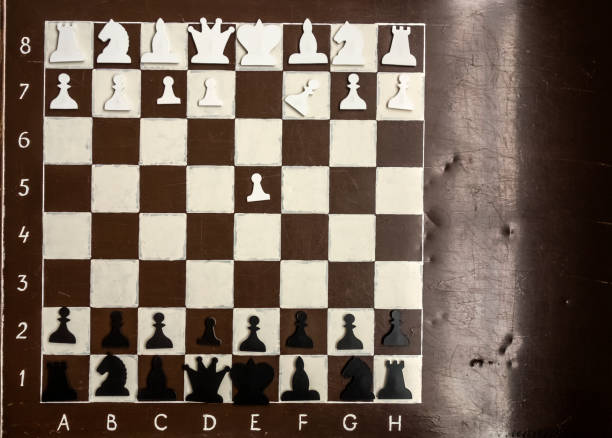How to play magnetic chess?-For beginners training their skills or seasoned enthusiasts, mastering magnetic chess strategy hinges on grasping its core rules. While its fundamental gameplay mirrors classic chess, its unique magnetic design innovatively delivers stable movement and enhanced mental training.
Chess comes in various forms, ranging from the most classic traditional chess to innovative magnetic chess that aligns with modern development. Novel creations like magnetic chess seamlessly blend the strategic gameplay of traditional chess with the convenience of magnetic pieces. It serves as an ideal choice for enjoying the thrill of chess during travel, fostering warm family bonding through interactive group thinking, and guiding beginners in their chess learning journey.
This guide will break down the core rules of magnetic chess, explain how magnetic properties enhance gameplay, and recommend video resources to help you intuitively grasp each step and know how to play magnetic chess. This ensures you can confidently begin playing solo or with others in no time.
Learn How to Play Magnetic Chess with Rules, Tips & Video Guide
Materials Needed for Your Game
Magnetic chess sets are a variation on classic chess, with pieces attached to the board using magnets. This prevents the pieces from shifting during play, making them ideal for travel and on-the-go play. Magnetic chess sets come in a variety of sizes and styles, perfect for casual players and advanced enthusiasts alike.
You’ll need a basic set to get started. Here’s what to gather:
- Magnetic chess set: Includes 20 round magnetic pieces (10 per player, usually in contrasting colors).
- Playing surface: A flat table with a string or cord to form a 12-18 inch circle as the play area.
- Optional extras: A timer for faster rounds or extra pieces for variations.
Sets are affordable, often under $20 on sites like Amazon. For quality picks, check official board game retailers.
Understanding the Game’s Objective
The goal? Place all ten pieces in a circle without them sticking to each other. If they attract each other, you pull the group back into your hand, resetting your progress.
The key to the game lies in carefully placing the pieces amidst the magnetic stakes. This core concept adds to the tension, making each round feel like a gamble.
In a 2025 survey of tabletop game players, this type of strategy game accounted for 24% of the market share, appealing to players who enjoy carefully calculated risks. I believe that, unlike pure strategy games, the key to this type of game lies in the combination of luck and skill.
Magnetic Chess Rules Explained
Rules keep the game flowing while highlighting the magnets.
Placement Basics: Pick a piece and drop it flat inside the circle, no overlapping.
Handling Attractions:
- If it sticks to any piece (yours or opponent’s), remove the whole group.
- Add them back to your hand—chains count if one snap triggers more.
Poles matter: Opposite attract, same repel.
No Stacking: Touch edges only if risking a connection.
Turn Flow:
- Place, check for sticks, resolve.
- Pass to the other player.
Extras: Pass if no safe spot (uncommon); game ends when one empties their hand.
These magnetic chess rules are straightforward yet deep. For full details, see industry standards from BoardGameGeek.
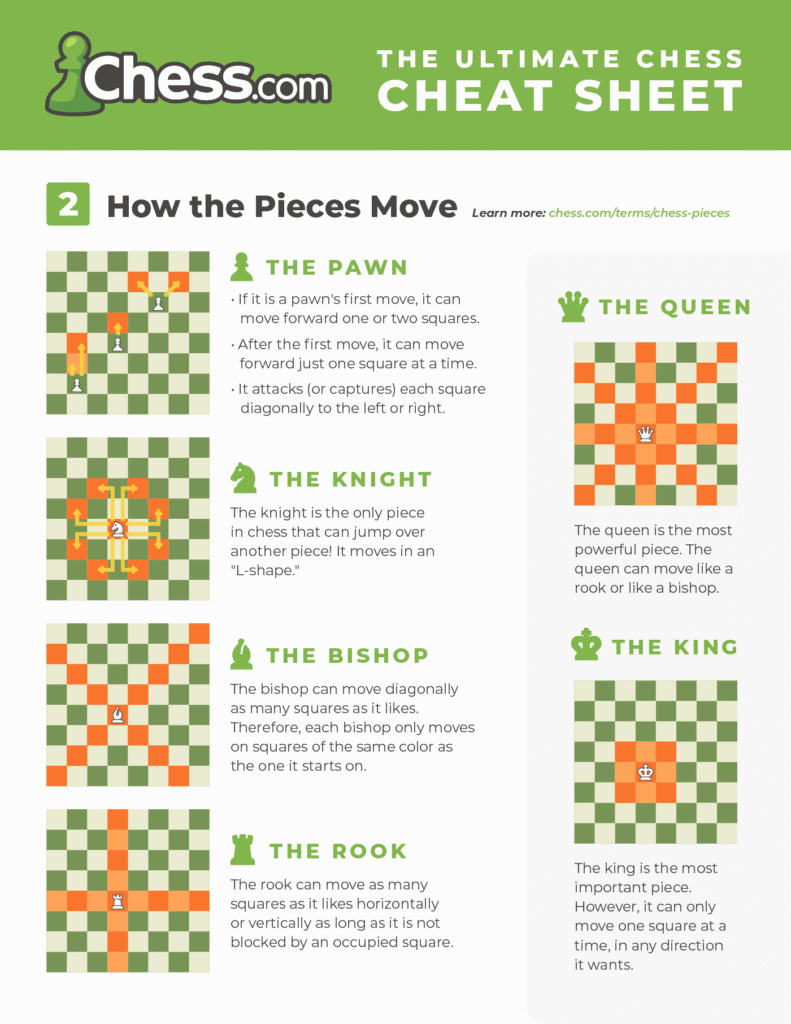
Player Preparation: Setting Up the Board and Pieces
Getting ready is simple and quick. Two players face off across the table.
- Lay out the string in a circle to mark the central zone.
- Split the pieces: Each gets 10 of one color, held in hand.
- Decide who starts—maybe flip a coin or let the youngest go first.
This setup keeps things fair and focused on the magnetic action.
Step-by-Step Gameplay Walkthrough
Ready to play? Follow these steps for a smooth game.
- First Move: Starter places a piece in the circle’s center to minimize risks.
- Observe and Plan: Check existing polarities—north repels north, attracts south.
- Place Carefully: Drop near isolates or sabotage opponent subtly.
- Resolve Snaps: If stuck, retrieve cluster; otherwise, turn ends.
- Build Tension: As circle fills, attractions spike—balance offense and defense.
- Close Out: Near the end, pressure mounts; one wrong move can flip the game.
Mid-game gets chaotic, but that’s the thrill. Practice makes it intuitive.
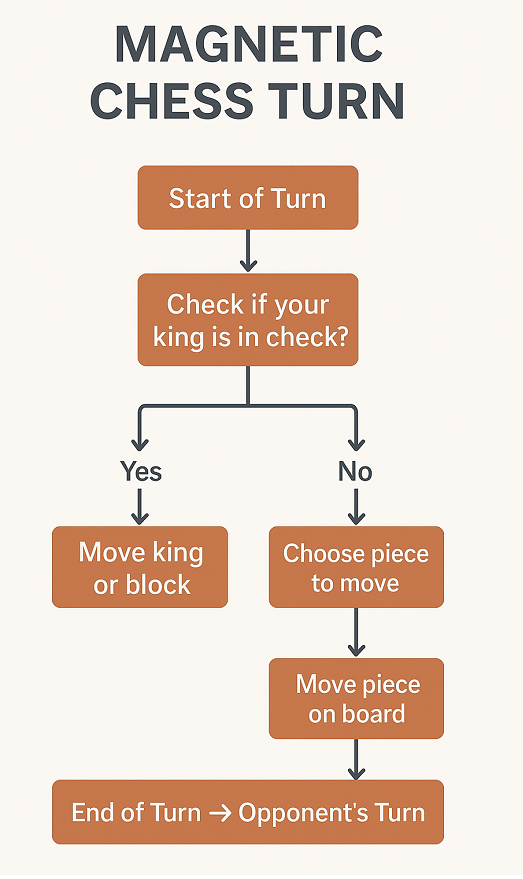
Strategies and Tips for Winning
Winning takes smarts. Start basic, then advance.
Newbie Advice:
- Space pieces early to avoid early snaps.
- Test polarities off-board first.
Pro Tactics:
- Bait opponent into your traps.
- Group same-pole pieces as shields.
Weigh risks: Crowded boards mean 50% snap chance.
Pitfalls: Don’t rush—check setups; ignore frustration from “unlucky” sticks.
Magnetic-Specific Considerations
The magnetic nature of the pieces introduces unique aspects:
- Piece Stability: Magnets ensure pieces stay in place, even during transport.
- Board Interaction: Magnetic boards may have varying strengths, affecting piece adherence.
Common Mistakes to Avoid
- Overestimating Magnet Strength: Not all magnetic boards have the same holding power.
- Ignoring Board Orientation: Some boards may have a preferred side for optimal magnetic interaction.
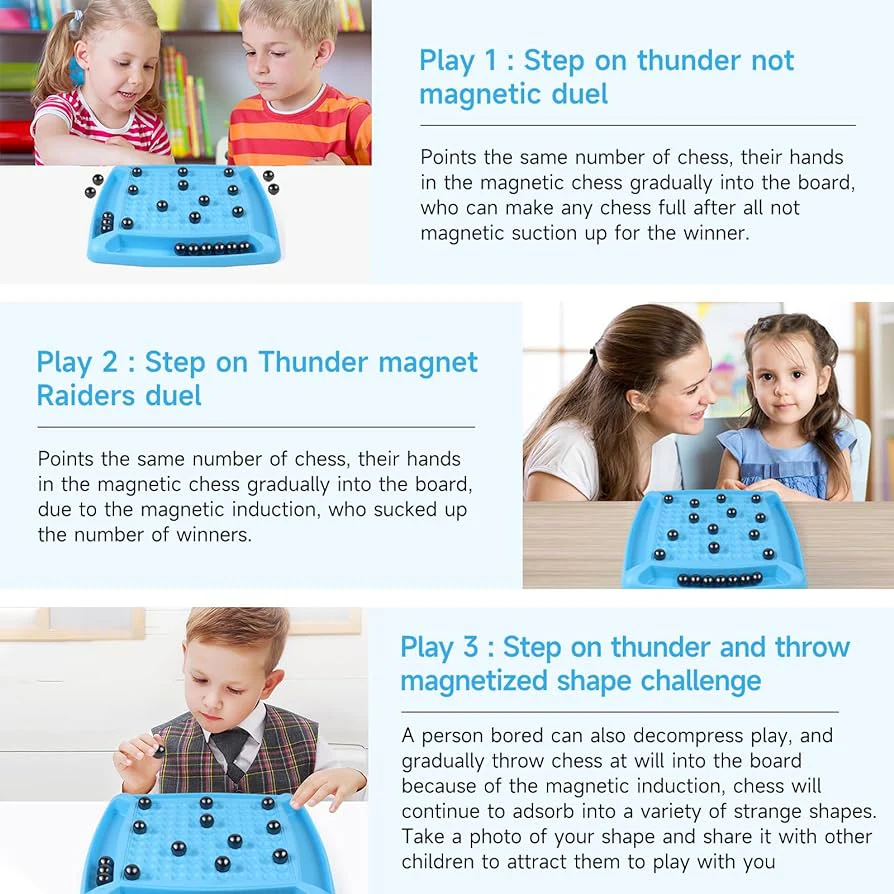
Tips and Tricks for Magnetic Chess Players
- Practice Regularly: Consistent play improves familiarity with magnetic interactions.
- Analyze Games: Review past games to identify areas for improvement.
- Stay Updated: Keep abreast of new magnetic chess variants and strategies.
A survey on strategy preferences showed that many people prefer this type of relaxing game to more serious games.
My opinion? It focuses on adaptability and is perfect for casual players.
Visual Guide: Recommended Magnetic Chess Video
Videos clarify the chaos. Watch “How To Play Magnetic Chess” on YouTube for a quick demo. It covers setups, snaps, and wins in real time.
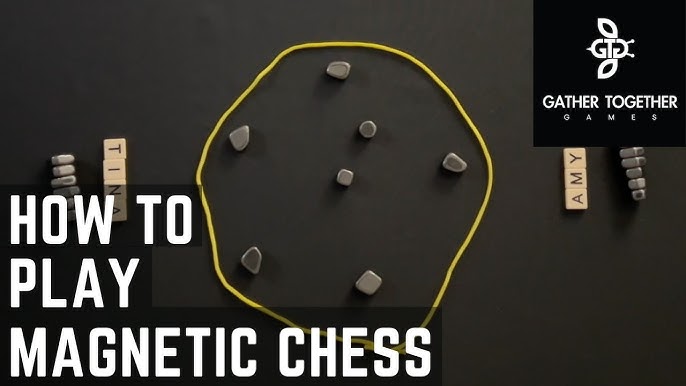
Key spots: 1:00-3:00 for rule examples; 3:30+ for full games. For more, search #MagneticChess on TikTok for fun clips.
Trending on X: Users rave about its unpredictability, like one calling it “insanely dope.”
Other Magnetic Chess Learning Methods Besides Traditional Rules And Videos
Beyond rules and videos, try hands-on methods.
- Solo Trials: Place pieces alone to learn snaps without pressure.
- Buddy Sessions: Learn from a pal’s real-time advice.
- Online Groups: Forums like Reddit’s r/boardgames share tips.
- Short Games: Use 5 pieces to grasp basics fast.
- Similar Games: Draw from Jishaku for tactics.
These build confidence uniquely.
Do The Rules Need to Be Flexible?
Absolutely—tweaks keep it fresh.
- Easy Mode: Skip polarities for kids.
- Speed Variant: 20-second turns amp excitement.
- Teams: Pair up for 4-player fun, shared wins.
Adjustments can be made based on age or time; test to ensure balance. According to a gender preference survey, women generally prefer social adjustments. I believe flexibility makes it more inclusive.
Do We Have to Imitate Everything in the Video While Learning?
No—videos guide, but personalize.
- Core to Keep: Setup, turns, snaps.
- Flexible Parts: Ignore fancy drops; adapt strategies.
- Your Style: Experiment after basics.
Videos miss real feel, so play trumps watching. In my experience, this leads to better mastery.
Variations and Subsequent Chess Ability Enhancement
Mix it up with changes.
- Multi-Player: 3 folks with fewer pieces.
- Timed: 30 seconds per turn.
- Hybrid: Add scoring like Jishaku.
Buy sets on Amazon or TikTok Shop. Practice solo, then play friends. Magnetic chess could surge as a trendy, low-commitment option.
Conclusion – Magnetic Chess Combines Tradition with Innovation
By analyzing the core rules of magnetic chess, how to play magnetic chess and explaining how its magnetic properties enhance gameplay, along with recommended training video resources, it becomes clear that magnetic chess is an innovative game set that perfectly blends strategy with portability. These very characteristics make it an ideal choice for players of all ages and skill levels.
It’s important to note that when playing magnetic chess, you must follow its core usage rules—from piece movement to checkmate objectives—while relying on the magnetic design to prevent pieces from shifting. The magnetic, fixed, and loss-proof nature allows you to enjoy uninterrupted chess gameplay anytime, anywhere, without worrying about your usage scenario. Whether it’s family or friend interactions, or even breaking the ice with strangers while traveling, it’s no problem.
Prefer visual guidance over text? Opt for video tutorials. These dynamic demonstrations showcase board setups, move techniques, and strategic layouts, blending theory with practice for tangible understanding. Whether you’re using video tutorials to introduce children to chess fundamentals or seeking tools to sharpen your own competitive skills, magnetic chess proves that classic games adapt seamlessly to modern life.
Pick up the board, watch the tutorials, learn how to play magnetic chess and let this novel magnetic charm immerse you in the unique strategic thinking and enjoyment of chess.
